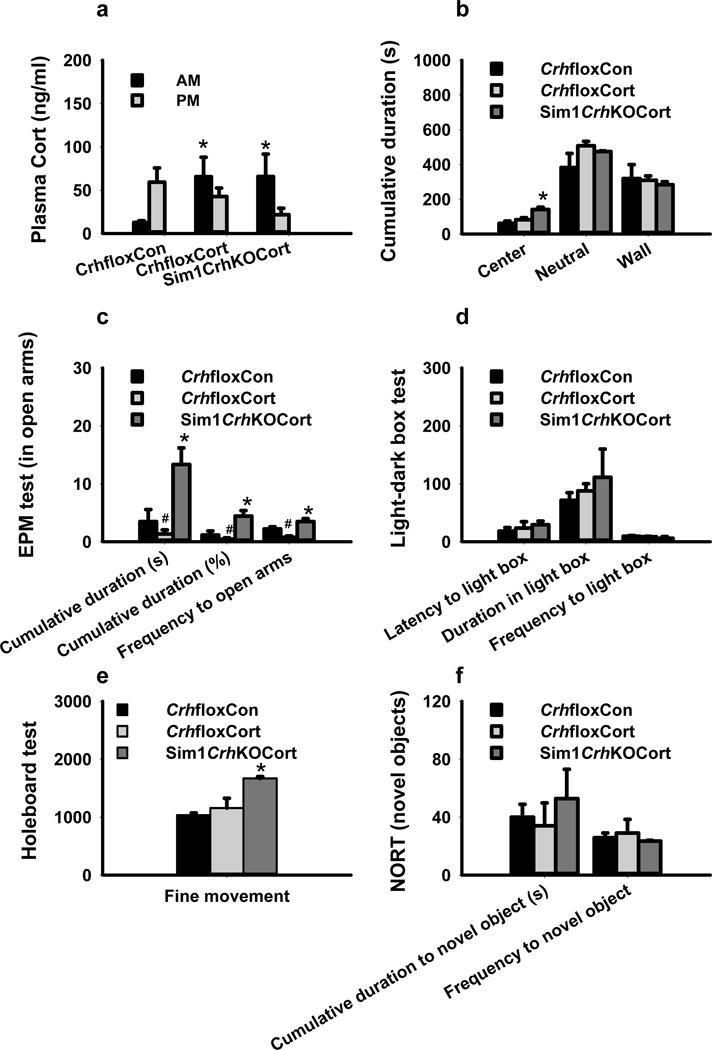Figure 5.

Corticosterone supplementation did not reverse anxiolytic behaviors in Sim1CrhKO mice. a) Morning (7–8am) plasma corticosterone increased in CrhfloxCort and Sim1CrhKOCort animals during administration of corticosterone (5ug/ml) in drinking water compared to CrhfloxCon mice; b) Sim1CrhKOCort mice spent more time in the center of open field test compared to CrhfloxCon and CrhfloxCort mice; c) During EPM testing, Sim1CrhKO mice with corticosterone supplementation (Sim1CrhKOCort), had significantly increased cumulative duration and the entrance frequency into the open arms compared to Crhflox control mice, while CrhfloxCort animals had decreased time in the open arms; d) During lightbox testing, Sim1CrhKOCort mice showed a non-significant trend of more time in the light area; e) During holeboard testing, Sim1CrhKOCort mice showed increased fine movement compared to CrhfloxCon and CrhfloxCort animals; f) During novel object testing, Sim1CrhKOCort mice showed a non-significant trend towards increased cumulative duration for novel objects; *P<0.05, Sim1CrhKOCort and CrhfloxCort versus CrhfloxCon; #P<0.05, CrhfloxCort versus CrhfloxCon. For all tests, Sim1CrhKOCort (n = 4), CrhfloxCon (n = 5) and CrhfloxCort (n = 4).
